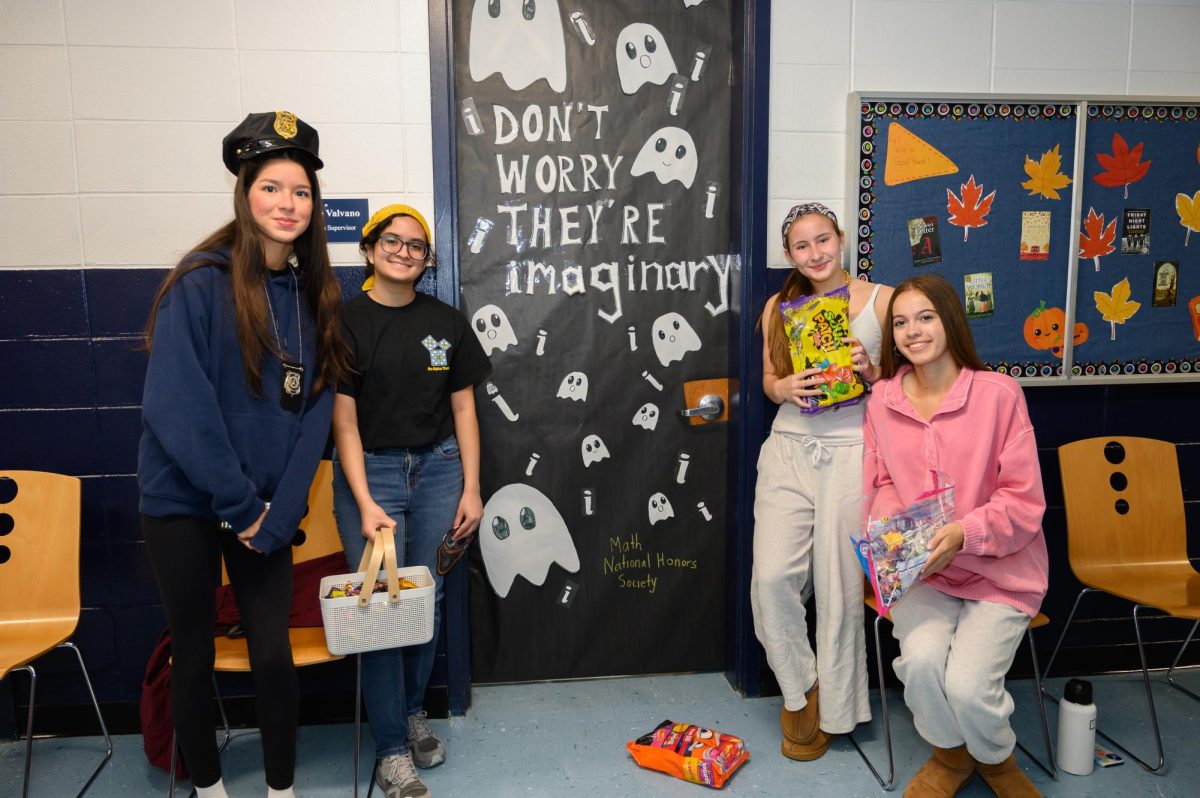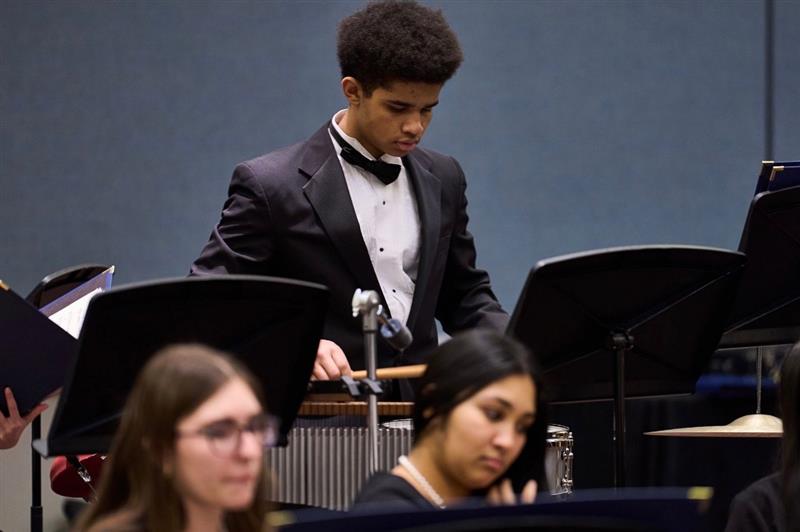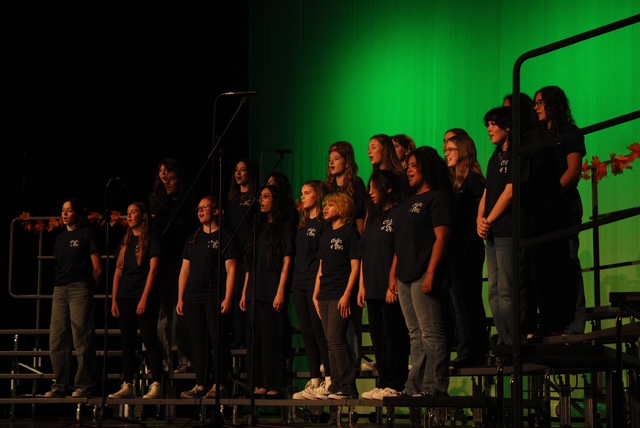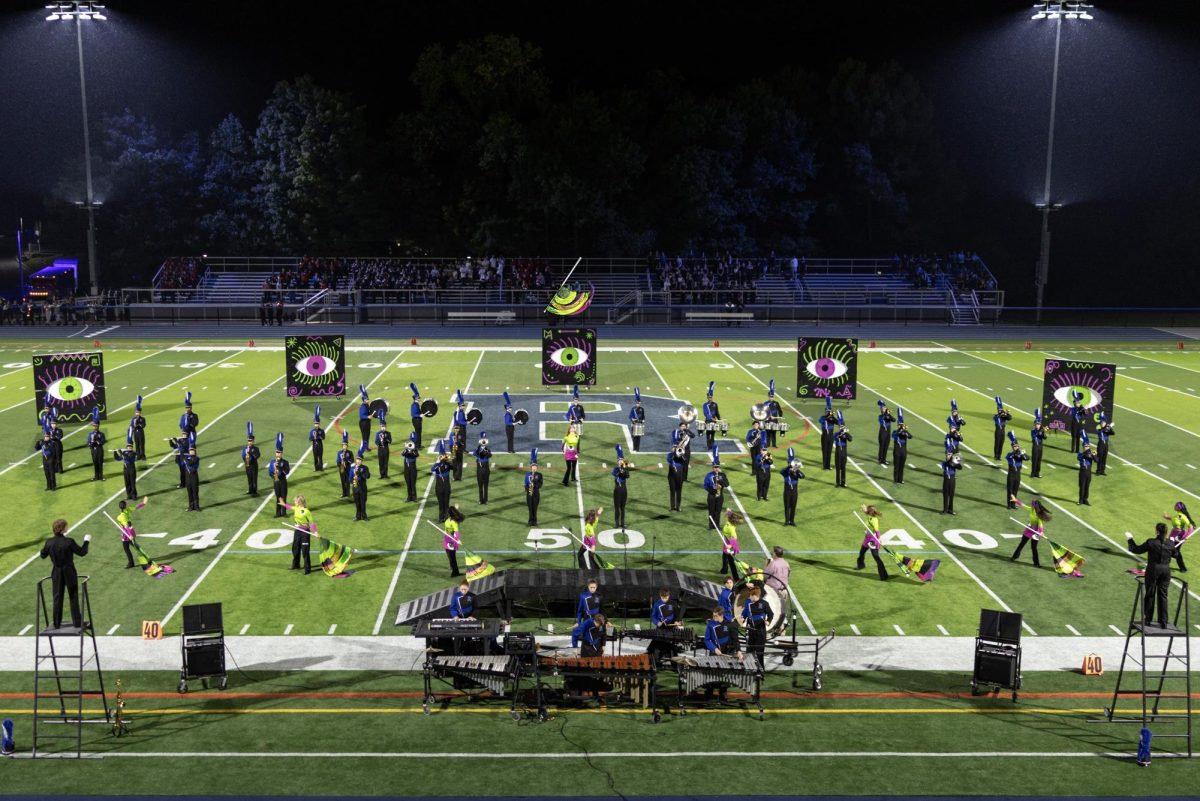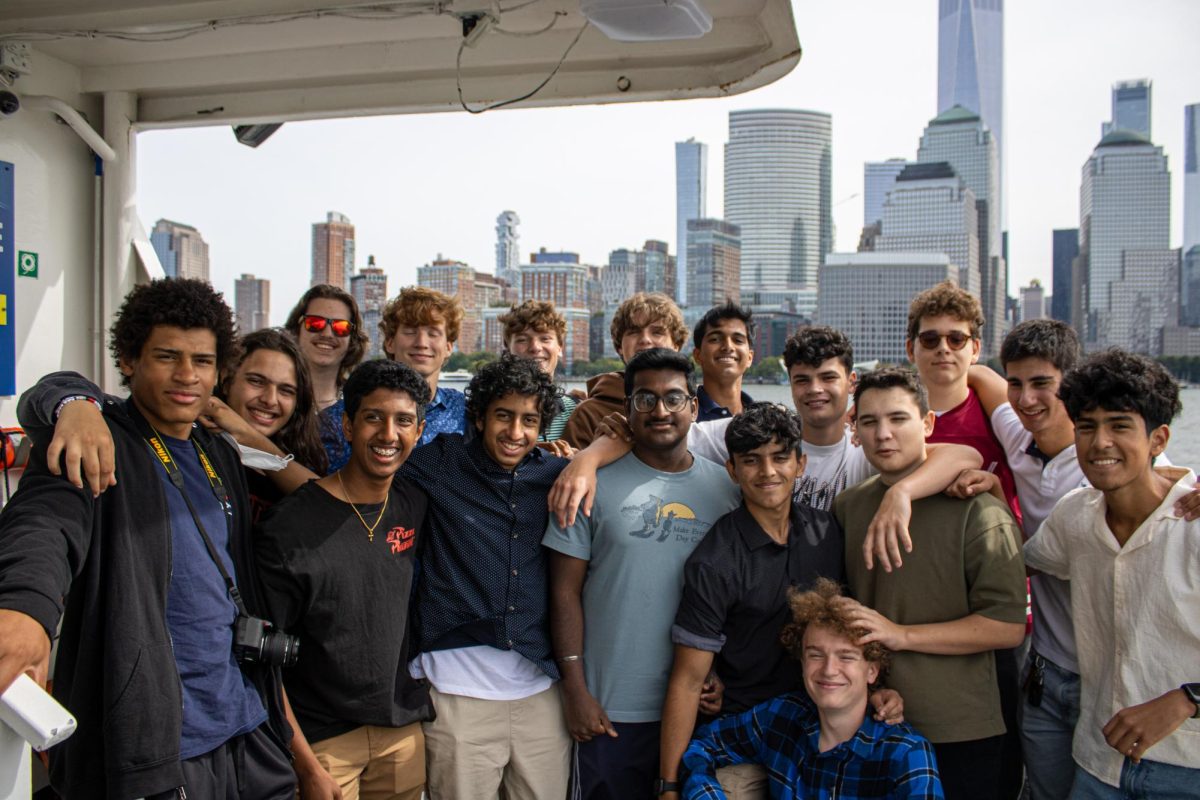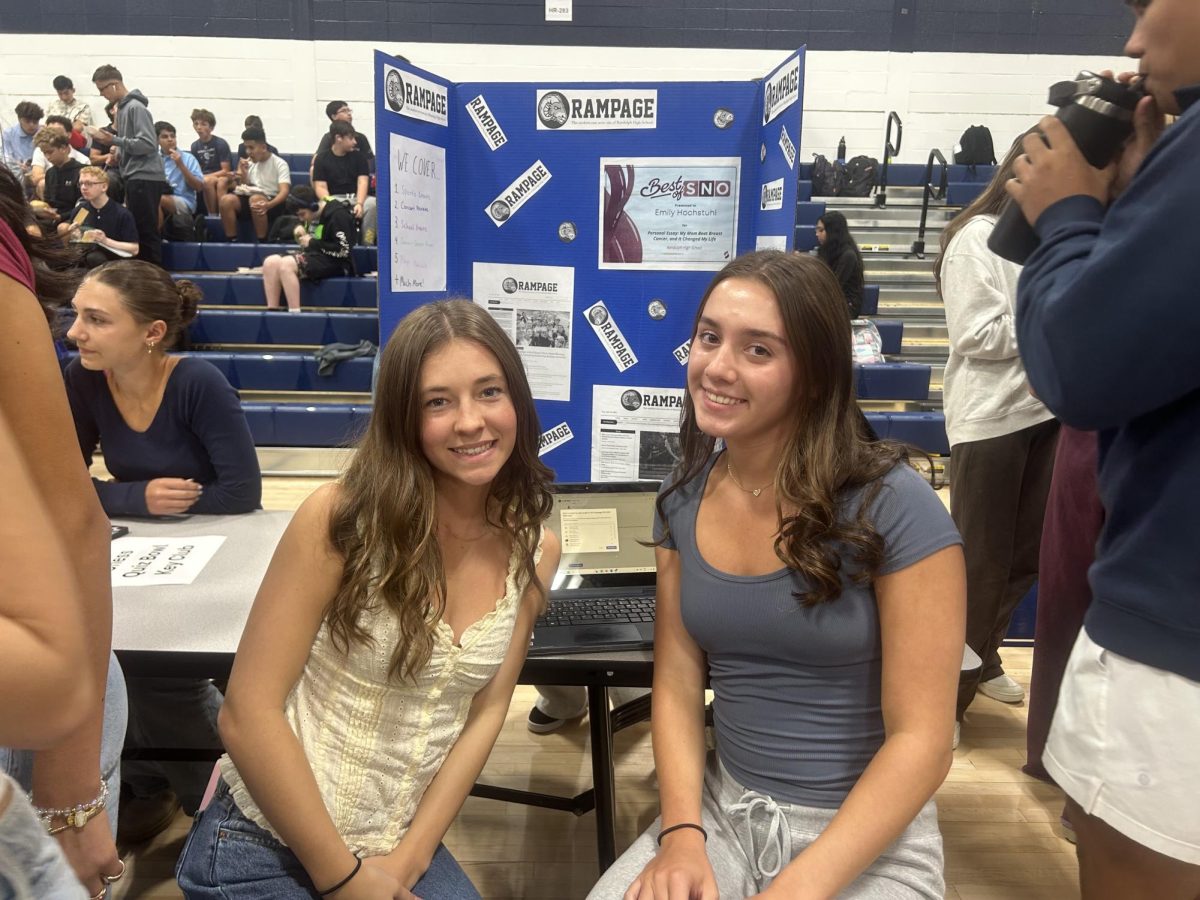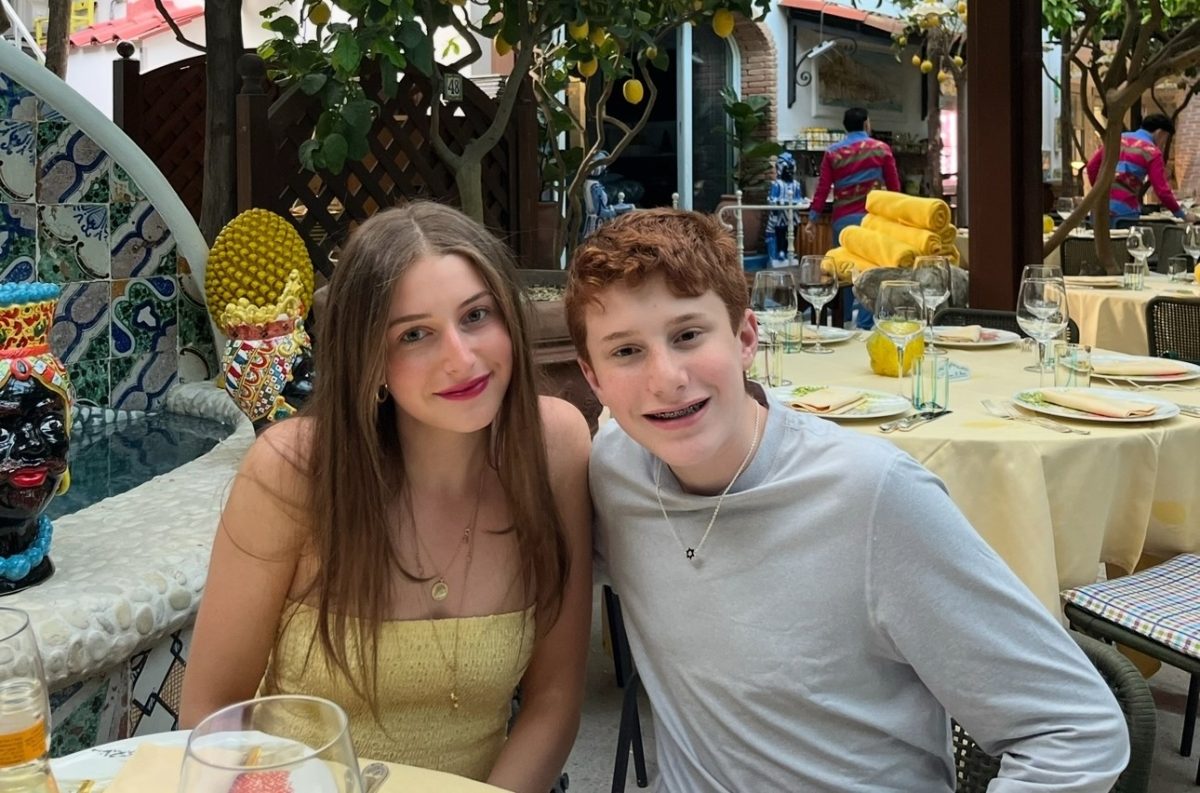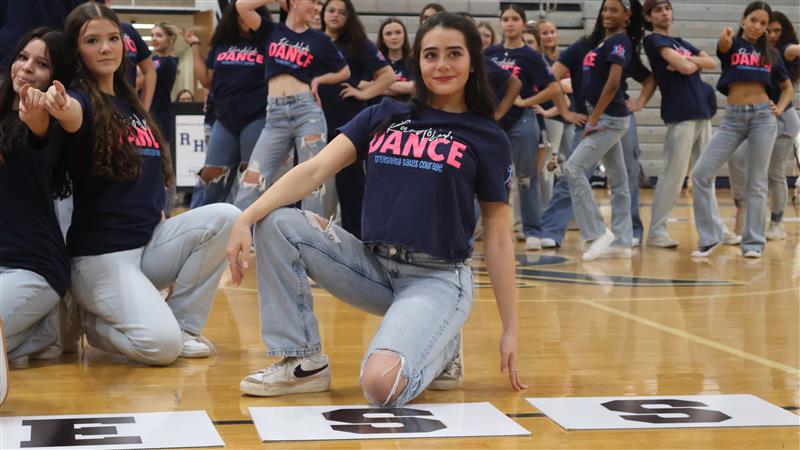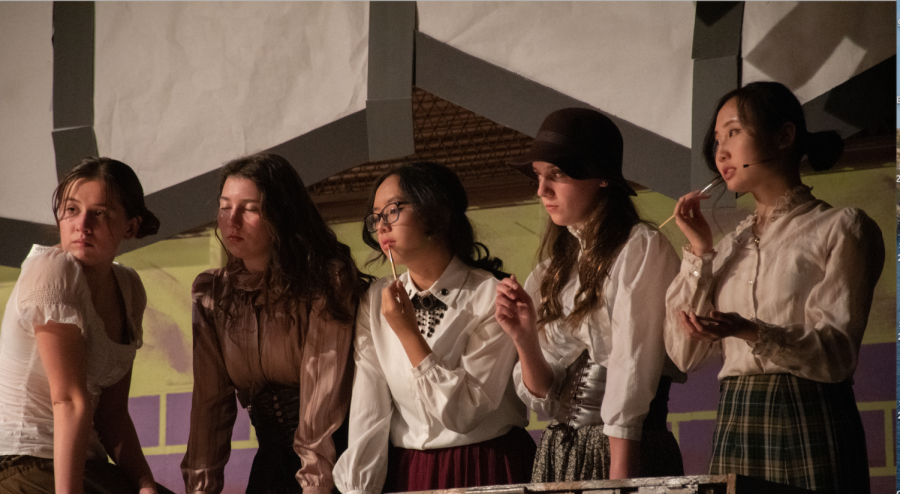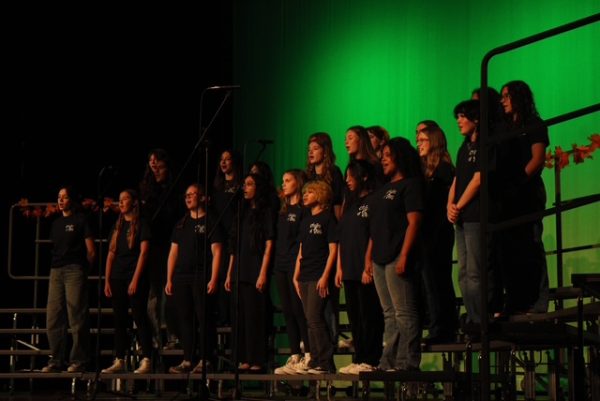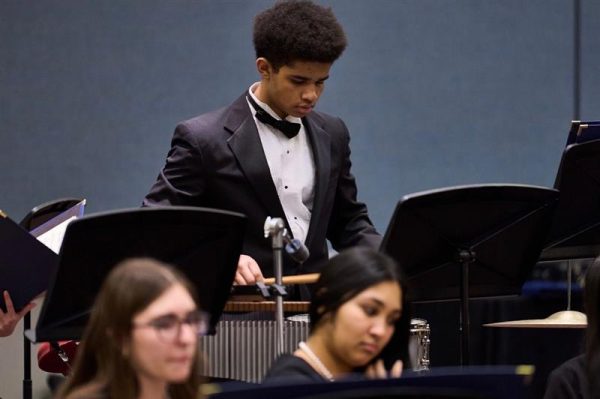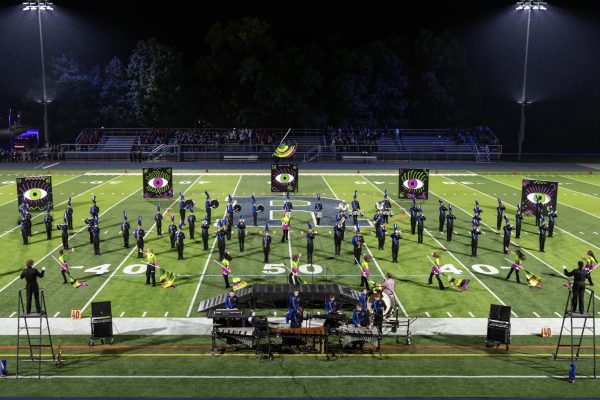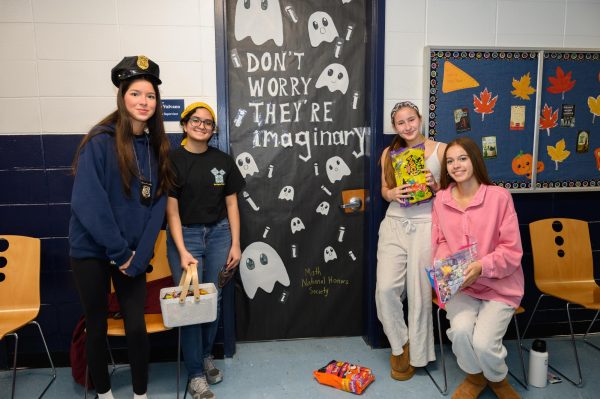Drama Club Stages Riveting Production of “Radium Girls”
From left: Leah Ohlssen, Kiersten Drazek, Emma Basa, Lilly Elterich, and Tina Yuan perform a scene in “Radium Girls” on Nov. 16, 2022.
Members of the high school Drama Club brought a forgotten piece of history back to life with their commendable production of “Radium Girls” on Nov. 16-18, held in the high school auditorium.
The play was inspired by a true story that occurred in Orange, New Jersey, beginning in 1917, of female factory workers who contracted radiation poisoning from painting watch dials with a special, luminous paint, then bravely fought for their rights to a safe workplace in the 1920s.
“[The play was] a very different piece of theater than we’ve ever seen before at RHS,” said senior Haley Thompson, who played character Diane Roeder. Despite the dramatic shift from more lighthearted shows that are typically done by the high school, Thompson noted that “it’s really important for us to be doing a piece like this. It’s dramatic, emotional and raw.”
Directed by Jacob Burlas, who also teaches English at the middle school, the play incorporated elements of Brechtian theater and horror to leave audiences with powerful messages about heavy subjects such as worker exploitation, perseverance in the face of corruption, and even death that still ring true today.
Over 60 students, volunteers and administrators joined creative forces to successfully stage this complex production. To prepare, the actors did extensive character research, led by the dramaturg, senior Eden Bailey, to ensure the historic accuracy of the play.
Actors in leading roles included sophomore Carly Ellermeyer, who masterfully portrayed Grace Fryer, the main dial painter; and sophomore Brendan Angillelo as Arthur Roeder, the owner of the U.S. Radium Corporation. They and other actors spent weeks fine-tuning their delivery and tone, as many of their lines were actual quotes from the real-life individuals they were portraying.
Behind the scenes, stage crew members played a fundamental role in the production process. Film teacher Jennifer Marchese took on the role of set designer and amazed audiences, especially with the well-thought-out set design that imitated a clock to emphasize the looming fear that time was running out for the dial painters.
Other stage crew members including stage managers senior Sophia Fliegler and sophomore Carolyn Marconi, worked tirelessly, arriving before and staying later than the actors themselves to perfect every stage detail, transition and prop. “Our close-knit bond as a crew really shined through,” Fliegler said, recalling the long days that she and the crew spent painting the back wall and building the set.
The costume design for the show was also intricate.The creative vision for the costumes started as a diesel-punk style and then transitioned to steampunk with a more industrial feel to represent the dial workers and how they were treated like machines rather than humans, with no choice over their ultimate demise.
Makeup artist Freddie Sanchez worked continuously backstage, applying the glowing makeup to the actors’ jaws to reflect their radium poisoning. Prior to the performance, he and other members of the makeup team experimented with different brands until they finally found a skin-safe paint that glowed under black light and could be seen by the audience.
“I got inspiration from some previous ‘Radium Girls’ posters, and I thought about how this play’s makeup would stand out from the rest,” Sanchez said. “I’d say I did about 20 different people’s makeup two to three times a show.”
Members of the tech crew also worked tirelessly with technology to ensure that all mics, sound equipment, and lighting worked effectively and to properly incorporate the horror element into the the show.
To further the theme of time running out for the dial painters, Mr. Burlas, along with senior Benjamin Neufeld and junior Evan Shapo, spent hours on the sound design, incorporating a constant ticking into the scene transitions to create a sense of anxiety in the audience as the play grew closer to its tragic end.
With an eerie use of shadows and neon backlighting, crew members were also able to impeccably communicate the atmosphere of the story. At the end of the show, the talented crew emerged from their booth to applause from cast and audience members alike for their amazing technological creativity.
By all accounts, the play was bona fide hit, with a grand total of 508 tickets sold for the three performances. Audience members left the theater clearly impacted by the story itself as well as the incredible display of talent, historical knowledge and theatrical expertise of the remarkably dedicated actors, crew and staff.
Your donation will support the student journalists of Randolph High School. Your contribution will help allow us to purchase equipment and cover our annual website hosting costs.

